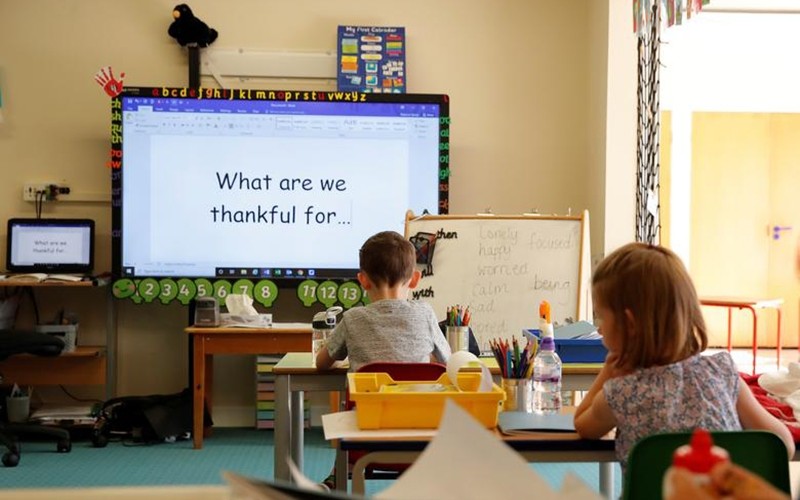Experts recently warned that if schools do not urgently make up for the knowledge gap of students during the pandemic, the younger generation may be at risk of losing their income in the future.
According to the Asian Development Bank (ADB), each student in Asia has lost about half a year of effectivestudy. This lack of knowledge will reduce their labourproductivity, leading to lower income levels. Specifically, the income level of students from the poorest families is estimated to have decreased by more than 30% compared to students from the richest families. The future income of girls could be 28% lower than that of boys.
During the more than two years of the COVID-19 pandemic, the model of online teaching and learning has been promoted in many countries. However, it cannot be denied that online learning still has limitations and cannot completely replace face-to-face learning. Poor students often face many difficulties when learning remotely due to a lack of equipment such as computers and internet as well as lack of parental support and an appropriate learning environment at home.
Therefore, many students have had to drop out of schooldue to limited family finances. The United Nations Educational, Scientific and Cultural Organisation(UNESCO) has sounded the alarm about the increasing dropout rate among boys.
According to UNESCO, the risk of boys dropping out of school is highest in East Asia and the Pacific, Latin America and the Caribbean, as well as in Arab countries. According to a study conducted in 2020, 97 million out of 160 million children in labour are boys.
These numbers reflect the persistent and severe impact of the pandemic on global education while urging countries to focus on comprehensive child care to protect the children from the “whirlwind” of COVID-19.
Many initiatives have been put forth to help children fill in the knowledge gap. Experts are calling on governments to ensure safety when reopening schools. Whenever a new wave of COVID-19 breaks out, schools are always one of the first places to close. Therefore, in order to avoid falling into a vicious circle of learning interruption, strict compliance with epidemic prevention and vaccination regulations is the core factor.
Schools must ensure social distancing, ventilate classrooms, install multiple hand-washing and sanitisingsites, arrange their meal times to avoid mass gatherings, and closely monitor COVID-19 symptoms.
In addition, schools should apply innovative teaching methods, suitable for each student’s level while regularly and closely monitoring learners’ progress in learning. Programmes such as school meals and educational subsidies are also key to reducing dropout rates among poor students and encouraging dropouts to return to school.
The SARS-CoV-2 virus is constantly changing and is a great challenge for all humanity. In that context, opening schools safely is a necessary step, but not enough. Policy makers need to build education systems that are flexibleand resilient in emergencies and adopt innovative educational approaches to fill gaps in knowledge over a long period of distance learning, thereby preventing lasting consequences for the young generation - the future green sprout of humanity.
















